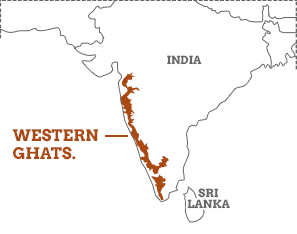How does natural resource like water cause geo-political conflicts in India?
Soil formation, or pedogenesis, is a complex process that involves the physical and chemical weathering of rocks and the decomposition of organic matter. This process occurs over long periods and is influenced by several factors: Parent Material: The type of rock from which the soil is derived playsRead more
Soil formation, or pedogenesis, is a complex process that involves the physical and chemical weathering of rocks and the decomposition of organic matter. This process occurs over long periods and is influenced by several factors:
- Parent Material: The type of rock from which the soil is derived plays a significant role in determining its mineral composition and texture. Different parent materials weather at different rates and influence the initial stages of soil development.
- Climate: Temperature and precipitation are critical in soil formation. Warm, wet climates accelerate chemical weathering and organic matter decomposition, leading to deeper and more developed soils. In contrast, cold or arid climates slow these processes, resulting in thinner soils.
- Organisms: Plants, animals, and microorganisms contribute to soil formation by adding organic matter and facilitating the breakdown of minerals. Roots help in breaking up parent material, while microorganisms decompose organic matter, enriching the soil with nutrients.
- Topography: The landscape’s slope and orientation affect drainage and erosion. Soils on steep slopes may be thinner due to erosion, while those in depressions may be thicker and more fertile due to the accumulation of materials.
- Time: Soil formation is a gradual process that can take thousands of years. The longer the soil has been forming, the more developed it becomes, with distinct horizons (layers) that indicate various stages of development.
- Human Activity: Agricultural practices, deforestation, and urbanization can significantly alter soil formation processes by changing land use, affecting erosion rates, and introducing pollutants.
Factors Influencing Soil Development in Different Regions
- Tropical Regions: High temperatures and heavy rainfall lead to intense chemical weathering and leaching of minerals, often resulting in nutrient-poor soils. However, the rapid decomposition of organic matter can maintain soil fertility in undisturbed areas.
- Temperate Regions: Moderate climate conditions promote balanced physical and chemical weathering. These regions often have fertile soils with well-defined horizons, suitable for diverse agricultural activities.
- Arid and Semi-Arid Regions: Limited precipitation slows down chemical weathering and organic matter decomposition, leading to thin, rocky, and often saline soils with low fertility.
- Polar Regions: Low temperatures and permafrost conditions inhibit soil formation, resulting in shallow, poorly developed soils with limited biological activity.
Significance of Soil Composition for Agriculture and Ecosystem Health
- Agriculture: Soil composition determines its fertility, water-holding capacity, and suitability for different crops. Key components include:
- Mineral Content: Essential nutrients like nitrogen, phosphorus, and potassium are crucial for plant growth.
- Organic Matter: Improves soil structure, water retention, and nutrient availability.
- Soil pH: Affects nutrient solubility and microbial activity. Most crops prefer a slightly acidic to neutral pH.
- Texture: Influences aeration, drainage, and root penetration. A balance of sand, silt, and clay (loam) is ideal for most crops.
- Ecosystem Health: Healthy soils support diverse ecosystems by:
- Nutrient Cycling: Decomposing organic matter releases nutrients that are essential for plant growth.
- Water Filtration: Soils filter and purify water, removing contaminants and replenishing groundwater supplies.
- Habitat: Provide habitat for a wide range of organisms, from microorganisms to larger soil fauna, which contribute to ecosystem stability and resilience.
- Carbon Storage: Soils act as a significant carbon sink, helping to mitigate climate change by storing organic carbon.
In conclusion, soil formation is influenced by multiple factors, including parent material, climate, organisms, topography, time, and human activity. Understanding these factors is crucial for effective soil management and conservation, ensuring agricultural productivity and ecosystem health.


Heat budget, also known as the energy budget or radiation budget, refers to the balance of incoming and outgoing energy flows in Earth's atmosphere and surface. This balance is crucial for understanding and predicting climate patterns and changes. Incoming solar radiation, or insolation, is the primRead more
Heat budget, also known as the energy budget or radiation budget, refers to the balance of incoming and outgoing energy flows in Earth’s atmosphere and surface. This balance is crucial for understanding and predicting climate patterns and changes.
Incoming solar radiation, or insolation, is the primary source of energy for Earth’s heat budget. This energy is largely absorbed by the Earth’s surface, heating it and driving atmospheric circulation and ocean currents. Some of the incoming solar radiation is also reflected into space by clouds, aerosols, and the Earth’s surface itself.
Once absorbed, the Earth re-emits this energy as longwave infrared radiation. Greenhouse gases, such as carbon dioxide and water vapor, trap some of this outgoing radiation in the atmosphere, thereby warming the planet in a natural process known as the greenhouse effect.
In Earth’s heat budget, approximately 70% of incoming solar radiation is absorbed by the atmosphere, land, and oceans, while 30% is reflected in space. For outgoing waves, about 70% of heat is radiated back into space, and 30% is absorbed by the atmosphere and clouds.
The heat budget varies across different regions and seasons due to factors like latitude, altitude, cloud cover, and surface characteristics (such as land or ocean). Imbalances in the heat budget can lead to changes in temperature, precipitation patterns, and weather events, influencing regional climates and global climate trends over time.
See less